
This event has ended.
40TH PLMA Conference Agenda

 Conference Co-Chair Melissa Knous Conference Co-Chair Melissa Knous
Duke Energy |
 Conference Co-Chair Michael Ohlsen Conference Co-Chair Michael Ohlsen
City of Tallahassee Utilities |
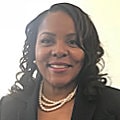 Conference Co-Chair SaLisa Berrien Conference Co-Chair SaLisa Berrien
COI Energy Services |
| Monday, November 4, 2019 |
|---|
| Optional Concurrent Pre-Conference Events |
| 8:00 – 9:00 am | Shared Interest Group Breakfast |
9:00 am – 4:30 pm | Evolution of Demand Response to Distributed Energy Resources: Fundamentals and Path Forward (registration required)
This one-day course explains how today’s demand response initiatives are evolving to interact with an emerging future with distributed energy resources for peak load management and much more. The course content expands on the Evolution of Demand Response whitepaper and discussion. See agenda and details at www.peakload.org/dr-evolution-training-st-petersburg. Learn more about PLMA Training at www.peakload.org/demand-response-training.
 Co-Chair Mark Martinez Co-Chair Mark Martinez
Southern California Edison |
 Co-Chair Christine Riker Co-Chair Christine Riker
Energy Solutions |
|
Interest Group Activities (included in conference registration)
Join the PLMA Interest Groups for candid, interactive roundtables among practitioners from utilities, consultancies, and technology providers who are actively engaged in the load management industry. Don’t miss the opportunity to learn from and share with your peers successes and challenges in these key areas of interest. |
|
Track A
9:00 – 11:00 am
Women in DM
 Co-Chair Melissa Knous Co-Chair Melissa Knous
Duke Energy |
 Co-Chair Isabel Sepulveda Co-Chair Isabel Sepulveda
EnergyHub |
 Co-Chair Lenore Zeuthen Co-Chair Lenore Zeuthen
Zeuthen Management Solutions |
Join us for a networking session. We'll start with informal breakout tables and share new DSM projects, jobs, responsibilities - come ready to talk about what you're working on, or working towards! During the second half we'll discuss mentoring: what it entails, what we've experienced, plus effective strategies for career development in the DSM industry. This session is ideal for those wanting to hone their mentoring skills as senior managers leading diverse teams, as well as for DSM professionals seeking to advance their careers.
|
Track B
9:00 – 11:00 am
Beneficial Electrification & Building Decarbonization – You Can't Have One Without The Other!
 Co-Chair Troy Eichenberger Co-Chair Troy Eichenberger
Tennessee Valley Authority |
 Co-Chair Steven Koep Co-Chair Steven Koep
Beneficial Electrification Ambassador |
All across the country, co-op, public power and investor-owned electric utilities are moving forward with Beneficial Electrification (BE) and Building Decarbonization efforts intended to reduce overall GHG emissions from the residential built environment. The recently released E3 study projects emissions reductions of 80-90% by 2050, primarily attributed to the ‘greening of the grid’ and the advancement of heat-pump technology for heating, cooling and water heating. Looking at both new construction and retrofit, electrification can not only cut emissions, but also “can lead to consumer capital cost savings, bill savings and life-cycle cost savings, in many circumstances.” Hear from electric utilities large and small about the BE and Bldg DeCarb efforts currently underway and gain a better understanding of this important opportunity.
Presenters:
 Carla Frisch Carla Frisch
Rocky Mountain Institute |
 Bob DiBella Bob DiBella
ICF |
 Patrick McCoy Patrick McCoy
Sacramento Municipal Utility District |
 Paul Miles Paul Miles
PECO, an Exelon Company |
|
| 11:00 am – 12:00 pm | Shared Evolution Training & Interest Group Lunch |
|
Track A
12:00 – 2:00 pm
Global Load Management
 Co-Chair Scott Coe Co-Chair Scott Coe
GridOptimize |
 Jon Hilowitz Jon Hilowitz
Orange and Rockland Utilities |
 Co-Chair Ross Malme Co-Chair Ross Malme
Skipping Stone |
Please join the Global Load Management interest group to explore several innovative technologies coming from companies based in countries from around the world. Mark Bailey of the UK-based Connected Energy will discuss the reuse of EV batteries for dynamic frequency response and power quality support. Tobais Weghorn of Germany-based Next Kraftwerke will discuss the aggregation of wind farms into a Virtual Power Plant to enhance performance in electricity trading. And Andrew Tanner of Australia-based Greensync will explore the global shift from utilities to aggregators of DERs, focusing on Australia, New Zealand, and the UK. The session concludes with an interactive discussion with the panelists and interest group members, exploring where the United States is leading the way and where we may be lagging either other countries and or other markets.
 Mark Bailey Mark Bailey
Connected Energy Limited |
Second Life EV Batteries: Their Role in Energy Storage |
 Tobias Weghorn Tobias Weghorn
Next Kraftwerke |
Flexible Wind Power: How a European Generator Earns More by Producing Less |
|
Track B
12:00 – 2:00 pm
Connected Devices
 Co-Chair Justin Chamberlain Co-Chair Justin Chamberlain
CPS Energy |
 Co-Chair Poornima Eber Co-Chair Poornima Eber
National Grid |
 Co-Chair Olivia Patterson Co-Chair Olivia Patterson
Opinion Dynamics |
 Co-Chair Tamer Rousan Co-Chair Tamer Rousan
Ameren |
The Connected Devices interest group will have a range of interesting topics including a session on performance tracking for direct load control devices, Connected devices and a Future DSO, and Solve Your EV Questions interactive session. In the first session, we’ll have BGE share how they manage over 400,000 devices and ensure they are operating as expected, to ensure sound business decisions are made. Following this session, Quanta Technologies and Arizona Public Service, will discuss connected devices and a future DSO. As grid support technologies continue to evolve, connected devices can emerge as one potential NWA tool that utilities could use in lieu of traditional grid support solutions. This presentation will discuss how connected devices can provide grid support function, what frameworks exist today for utilities to value it compared to other traditional grid solutions, and what type of market or future system operator is required to realize the full potential of NWA and connected devices. Finally, we’ll set up an interactive session to Solve Your EV Questions. This interactive session will focus on questions to address to EV vendors, including how to develop a program, how to select a device, dispatching, and grid impacts.
Presenters:
 Daniel Carr Daniel Carr
Alectra Utilities |
 Tom Hines Tom Hines
Arizona Public Service |
 Renee Guillory Renee Guillory
Arizona Public Service |
 Judson Tillinghast Judson Tillinghast
Arizona Public Service |
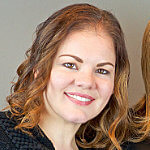 Dana DeRemigis Dana DeRemigis
Baltimore Gas and Electric |
 Carley Czyzewski Carley Czyzewski
Baltimore Gas and Electric |
 Ralph Masiello Ralph Masiello
Quanta Technology |
 Farnaz Farzan Farnaz Farzan
Quanta Technology |
 Eric Mallia Eric Mallia
FleetCarma |
 Chris Ashley Chris Ashley
EnergyHub |
|
| 2:00 – 2:30 pm | Refreshment Break |
|
Track A
2:30 – 4:30 pm
Customer Engagement
 Co-Chair Andrea Simmonsen Co-Chair Andrea Simmonsen
Idaho Power Company |
 Co-Chair Sharyn Barata Co-Chair Sharyn Barata
Opinion Dynamics |
 Co-Chair Scott Jarman Co-Chair Scott Jarman
Austin Energy |
 Co-Chair Tracy Schmidt Co-Chair Tracy Schmidt
Tennessee Valley Authority |
Back to the Future – Engaging EVs with DR
Bring your ideas and join the conversation for connecting customer EVs with DR. While EVs are a small portion of vehicles on the road, they have the potential to add significant and disruptive load in the future. Managing this growing load is an emerging topic in demand response. Unlike residential DR, EVs are different than technology tied to a home with a wide variety of approaches to manage or influence charging behavior and location, as well as different players. Customer transitioning to EVs must shift how they think about fueling their vehicle so they’re able to go when and where they desire.
Learn from our panel of experts the best ways to engage EV customers to make your program a success. Find out who and how to target, what does and doesn’t work, and how to assess the results. Then roll up your sleeves and dig in for some hands-on activities to expand the conversation and take learnings to the next level.
Presenters:
 Emma Rieves Emma Rieves
E Source |
 Mark Goody Mark Goody
FleetCarma |
|
Track B
2:30 – 4:30 pm
DER Integration
 Co-Chair Rich Barone Co-Chair Rich Barone
Hawaiian Electric Company |
 Co-Chair John Powers Co-Chair John Powers
Extensible Energy |
 Co-Chair Jamie Coffel Co-Chair Jamie Coffel
Honeywell Smart Energy |
Load Flexibility as a Grid Resource Workshop
In this two-hour workshop, we will address the growing need for innovation in delivering grid services from behind-the-meter DERs. Attendees will participate in a structured exercise of providing a price-responsive DER portfolio that delivers specific grid services in wholesale and retail markets. Each team will suggest behind-the-meter technology, communication protocols, customer engagement / automation approaches, and all other design parameters required.
Download the Activity Instructions and Materials HERE (zip file)
|
4:30 – 5:30 pm | PLMA Meetup
All workshop, interest group, and training registrants are welcome to attend to network and learn how to make the most of the Conference activities. |
6:00 – 8:00 pm | Board of Directors Meeting
Business meeting with working dinner only for Board members and At-Large Representatives listed at www.peakload.org/Leadership. |
| 8:00 – 10:00 pm | PLMA Member Welcome Reception on the Esplanade, Vinoy Rennaissance |
Wi-Fi Host: EnergyHub
| Tuesday, November 5, 2019 |
|---|
| 7:30 – 8:30 am | Breakfast Buffet in Sponsor Lounge |
Morning General Session 1
 Co-Chair Melissa Knous Co-Chair Melissa Knous
Duke Energy |
 Co-Chair Andrea Simmonsen Co-Chair Andrea Simmonsen
Idaho Power Company |
|
8:30 – 8:40 am | Opening Remarks
 Michael Brown Michael Brown
Berkshire Hathaway, NV Energy and PLMA Chair |
|
8:40 – 9:00 am | Welcoming Remarks
|
 Bob Donaldson Bob Donaldson
Manager – Residential Demand Response, Duke Energy
Bob Donaldson is Manager of Demand Response in Residential Markets at Duke Energy. He currently manages over 1500 & 700 MWs of dispatchable summer & winter load, respectively, in six states across the Carolinas, Midwest, and Florida. Bob has a Bachelor of Science degree in Mechanical Engineering from N.C. State University. He is a Registered Professional Engineer in North Carolina, is a Certified Energy Manager & Demand-Side Manager with the Association of Energy Engineers, and is a Licensed Electrical Contractor in NC. Bob also served as a member and chair of the DistribuTech Demand Response Advisory Committee for seven years.
|
|
|
9:00 – 9:45 am | A Panel Discussion on the Move to a Transactive Energy Market: Engaging Prosumers while Optimizing the Electricity System with Location- and Time-Specific Price Signals
DERs are fundamentally changing energy supply and demand wherever they are located, opening up opportunities for new business models based on a platform approach to the grid-DER relationship. A Distributed System Platform (DSP) facilitates a transactive energy market by exchanging system data such as prices, DER availability, DER schedules, and load forecasts between the utility, its customers and the broader grid. In doing so, a DSP allows for the creation of new markets and interactions that ensure that the right DER is paid the right amount of money for the right energy service.
Panelists from Ameren, Buffalo-Niagara Medical Campus (BNMC), National Grid and Opus One as solution provider, will share their perspectives and experience in trialing a transactive energy market to optimize grid investments and increase customer engagement. A closer look at National Grid’s project with Opus One Solutions and BNMC will reveal how the DSP allowed the utility to send location- and time-specific price signals to participating DERs, optimizing asset dispatch to support real-time operations while giving those customers an opportunity to earn market-rate compensation for their services.
This facilitated discussion will offer utility, customer and solution provider perspectives on how price signals generated in a transactive energy market reveal valuable opportunities for system optimization, including energy efficiency, demand response, load displacement, load reduction and conservation behavior. Panelists will discuss the customer perspective, major lessons learned, challenges that still need to be addressed, and impacts to utility business models in future DSP models.
 Moderator Rich Barone Moderator Rich Barone
Hawaiian Electric Company |
Panelists:
 Dave MacRae Dave MacRae
Opus One Solutions |
 Alex Rojas Alex Rojas
Ameren |
 Paul Tyno Paul Tyno
Buffalo Niagara Medical Campus |
|
9:45 – 10:15 am | Flexible Buildings DR Preference Tool
Flexible commercial building operations are an important option to help support grid stability in a future with greater renewables penetration. Commercial building participation in demand response (DR) programs, however, is not as widespread as many had predicted or hoped; one explanation has been uncertainty about acceptable service level adjustments. Our project focuses on reducing this uncertainty by providing potential participants with tailored recommendations on potential DR actions. These recommendations are provided via an open-source decision tool that can dynamically rank flexible load control options. Our presentation will focus on the preference elicitation research we are conducting with actual building energy managers regarding the risk-benefit tradeoffs they consider acceptable, as well as how this research is being incorporated into the tool. Note that this research is the result of implementing a survey instrument that was informed by an interview study; the interviews are interesting regarding the current state of DR decision-making.
Please take the survey at berkeley.qualtrics.com/jfe/form/SV_2fdZzqEm6BxPvJr.
 Margaret Taylor Margaret Taylor
Lawrence Berkeley National Laboratory |
|
| 10:15 – 10:45 am | Refreshment Break in Sponsor Lounge |
Morning General Session 2
 Co-Chair Michael Ohlsen Co-Chair Michael Ohlsen
City of Tallahassee Utilities |
 Co-Chair Joseph Childs Co-Chair Joseph Childs
Eaton |
|
10:45 – 11:15 am | Cutting Edge Data Providing Insight into the Future of Residential DR Aggregation
TVA has supported the multi-year technology demonstration of WH, Batteries, and Thermostats having collected data that characterized the resource performance. This gives TVA access to unique interval load and detailed operations data on more than 250 households with grid enabled, whole house battery systems, programmable thermostats, and water heaters. This unique cluster of load control devices presents an opportunity for TVA to engage in experimental research to advance their understanding of what might be capable in a future aggregated demand response world. The project team analyzed aggregate load reductions during system peak conditions and are in the process of developing a distributed energy resource (DER) aggregation modelling concept for simulating technical impact and economic cost-effectiveness based on different circuits, locations and customer demographics. This enables future calibrated modelling of LPC Aggregator strategies to understand ways they could potentially perform for future bulk power market developments. The presentation will highlight the rich data supporting this work and our progress to date.
 Sam Delay Sam Delay
Tennessee Valley Authority |
 Curt Puckett Curt Puckett
DNV GL |
|
11:15 am – 12:00 pm | Quick-Ramp, Customer Engagement: Price-Motivated Residential DR with 15 Minutes Notice
London Hydro launched a regulator-sponsored technology-enabled fast-ramp (15 min notice) critical peak pricing pilot in 2018. London Hydro's commitment to proactive participant engagement delivered. In addition to reducing On-Peak TOU energy consumption by 5% (on days with no critical price!), participants delivered as much as 1 kW of DR during hot events. Most importantly, a rotating random selection of 15% of participants whose enabling technology was disabled for events succeeded in delivering as much as 0.4 kW of DR through behavior alone - and that with only 15 minutes' notice. Navigant will present details of the impacts estimated and London Hydro will explain how they succeeded in educating and empowering their customers to deliver such substantial DR and behavioural energy savings.
 Carlos Lopez Carlos Lopez
London Hydro |
 Peter Steele-Mosey Peter Steele-Mosey
Navigant |
|
| 12:00 – 1:30 pm | Lunch Buffet in Sponsor Lounge |
Afternoon General Session 1
 Co-Chair Paul Miles Co-Chair Paul Miles
PECO, an Exelon Company |
 Co-Chair Ruth Kiselewich Co-Chair Ruth Kiselewich
ICF |
|
1:30 – 2:30 pm | Get Smart: Con Edison and Eversource Manages Peak Load and Meets Customer Needs Through Pilots
Customer awareness, enrollment, and engagement are critical to innovating peak load management. Through the lens of pilots and demonstration projects, Con Edison and Eversource will discuss their approaches to customer-centered rate and technology initiatives for peak load management – from conception, to design, execution, and evaluation. Panelists will cover key topics relevant to load management practitioners, including customer engagement around demand rates, gas DR, varied technologies (storage, solar), and traditional DR. The projects offer various solutions to meet specific customer needs and increase customer participation and retention. Panelists will share lessons learned for utilities to consider at each phase, including: pilot design (Con Edison’s Smart Energy Plan), implementation (Con Edison’s Smart Home Rate), approaches to partnerships/trade allies (Con Edison’s Smart Gas Water Heating) and balancing program scale and customization for customers’ technology solutions (Eversource’s C&I Demonstration Project).
 Annie Ramkissoon Annie Ramkissoon
Con Edison |
 Zach Sussman Zach Sussman
Con Edison |
 Candice Tsay Candice Tsay
Con Edison |
 Leigh Winterbottom Leigh Winterbottom
ICF |
 Michael Goldman Michael Goldman
Eversoure |
|
2:30 – 3:00 pm | Gas Non-Pipe Alternatives – Assessing the Value and Potential of Deferring Gas System Capital Expenditures
Much like electricity distribution, gas infrastructure investments are driven by peak demand. When demand is high, gas pressure drops and can lead to an inability to transport gas to end-use customers. The work implemented at Central Hudson is one of the first comprehensive assessments of a utility’s gas systems for non-pipe alternatives and the ability to use distributed energy resources (gas) to defer or avoid capital costs associated with upgrading gas pipelines. As part of the analysis, Central Hudson:
- Analyzed peaking demand patterns for all of its gas systems
- Quantified the relationship between gas use and peak pressure drops
- Estimated location-specific growth rates and the impact of the gas pressure
- Identified locations where reductions in local peak demand are beneficial
- Calculated the avoided cost or deferral value for each gas system
- Assessed the potential to defer capital investments by using load management
 Josh Bode Josh Bode
Demand Side Analytics |
 Mark Sclafani Mark Sclafani
Central Hudson Gas & Electric |
|
| 3:00 – 3:30 pm | Refreshment Break in Sponsor Lounge |
Afternoon General Session 2
 Co-Chair Christine Riker Co-Chair Christine Riker
Energy Solutions |
 Co-Chair SaLisa Berrien Co-Chair SaLisa Berrien
COI Energy Services |
|
3:30 – 4:00 pm | Demand on Demand - The Latest Residential Customer Engagement Challenge
Utilities are being forced to take a fresh new look at rate structures and how to best communicate and educate customers about them. This is due in part to the flat or declining load forecast coupled with a declining load shape caused by solar adoption. Utilities are moving away from flat or tiered rates to Time of Use and now Demand rates. In answer to the customer education challenge, JEA took a unique approach to proactively explain rates, putting the power of customer choice in their customer’s hands. They established a strategy around customer engagement to communicate complex rates with enabling hardware. This presentation will illustrate lessons learned and the impacts of customer education and enabling hardware on peak load management, and how these energy providers plan to move forward.
 Moderator Ann Fracas Moderator Ann Fracas
Apogee Interactive |
 Brian Pippin Brian Pippin
JEA |
|
4:00 – 4:30 pm | Smart Analytics for C&I DR: Understanding Existing Customers to Enhance Program Performance
This presentation will examine how Austin Energy has intelligently applied analytics to deepen their understanding of their C&I DR participants and enhance their DR program performance. At the portfolio level, analysis of event data can highlight issues such as participation fatigue that often follows sequential events, low occupancy that often occurs at educational facilities, event communication failure and much more. At the participant level, event data can be used to create score cards that rank their performance against industry standards, show additional incentives they could have earned, and offer recommendations for improvement. These score cards offer a starting point for a dialogue with customers that can lead to coaching and resolution of underperformance issues.
 Scott Jarman Scott Jarman
Austin Energy |
 Leigh Holmes Leigh Holmes
CLEAResult |
 Greg Thompson Greg Thompson
Schneider Electric |
|
4:30 – 5:00 pm | Sponsor Showcase Lightning Round
In this 30 minute session you will hear from several of our sponsors about the essence of their solutions. Our Co-chairs have vetted the presentations and helped the sponsors get their key messages compressed down to 3 minutes. This is not a marketing pitch, but a statement from the sponsors on specific examples of how they provide value.
Showcase Presenters:
|
5:00 – 7:00 pm | Networking Reception in Sponsor Lounge Hosted by Oracle Utilities
A key value to PLMA events is the opportunity to network with conference participants. Join us for a cocktails and appetizers. Come and share what you learned and get additional details about your topics of interest. |
Wi-Fi Host: EnergyHub
| Wednesday, November 6, 2019 |
|---|
| 7:30 – 8:30 am | Breakfast Buffet in Sponsor Lounge |
|
Track A
 Co-Chair Laurie Duhan Co-Chair Laurie Duhan
Baltimore Gas and Electric |
 Co-Chair Debyani Ghosh Co-Chair Debyani Ghosh
Navigant |
8:30 – 9:00 am
State of the Market: Utility Demand Response Insights
The demand response market is continuing to evolve as legacy programs retire and new technologies and pilots are adopted. This presentation will provide high-level insights into the results of SEPA’s 2019 utility demand response surveying effort, and will discuss the state of AC switch, thermostat and water heater programs, as well as commercial and industrial (C&I) automated and customer initiated programs across the U.S. Beyond the numbers, this presentation will discuss the latest trends, detailing how DR is playing a role in transactive energy and EV managed charging, and how the role of DR may continue to expand in the coming years.
 Brenda Chew Brenda Chew
Smart Electric Power Alliance |
|
Track B
 Co-Chair Justin Chamberlain Co-Chair Justin Chamberlain
CPS Energy |
 Co-Chair Meridith Nierenberg Co-Chair Meridith Nierenberg
West Monroe Partners |
8:30 – 9:00 am
Gas DR Pilots at Con Edison Company of NY
Con Edison launched two innovative Gas DR pilots for the winter of 2018/2019. There is a BYOT gas pilot for residential customers, and a performance-based gas DR pilot for commercial and industrial customers. Fresh off the pilot, Rachel Charow/Charles Umberger/Michael Sanchick (1-2 panel members, TBD), CECONY DR Program Managers, and Michael Siemann Ph.D., Resideo Engineering and Data Science Manager , will provide a general overview of the pilots, goals and initial findings on gas DR. This presentation will be compelling to the audience members who are considering adding gas/winter DR programs to their suite of DR/EE programs.
 Rachel Charow Rachel Charow
Con Edison |
 Michael Sanchick Michael Sanchick
Con Edison |
 Michael Siemann Michael Siemann
Resideo |
|
Track C
 Co-Chair Kitty Wang Co-Chair Kitty Wang
Energy Solutions |
 Co-Chair J.T. Thompson Co-Chair J.T. Thompson
Enbala |
8:30 – 9:00 am
Profiling and Managing EV Charging Load – TVA and FleetCarma
Tennessee Valley Authority (TVA), in conjunction with FleetCarma, has launched an electric vehicle load profiling program called SmartCharge Nashville to better understand the current and future impact electric vehicle charging has in their service territory. Using real-world EV charging and driving data, Drew and Eric will evaluate and discuss interim results from the SmartCharge Nashville program. They will also share insights into how utilities can leverage real-world charging data to make data-driven decisions for system planning, demand-side management strategies, and customer engagement. The SmartCharge Nashville program collects EV driving and charging from 200 participants. This data is utilized to compare weekday/weekend charging, energy consumed during on/off-peak, % of charging conducted with L1/L2/DCFC stations, and home vs. away charging. TVA is also utilizing this data to address questions such as how TOU rates affect EV load, and determining the amount of manageable EV load now and into the future.
 Drew Frye Drew Frye
Tennessee Valley Authority |
 Eric Mallia Eric Mallia
FleetCarma |
|
|
Track A
9:00 – 9:30 am
Highways, By-ways and Road Construction – Starting a DERMS Journey
The Evergy Energy Solutions team officially began planning this DERMS journey more than two years ago and has now successfully completed the first leg of this trip. From the original "someday" vision, to vendor selection, to our Phase 1 launch for Summer 2019; we will share successes, challenges and lessons learned in developing and integrating this complex new system – so far it's already been quite a ride! So, pack your bag, grab your shades and join us as we speed into the future of our new Distributed Energy Resource Management System.
 Angie Boone Angie Boone
Evergy |
 Andrea Carrillo Andrea Carrillo
Evergy |
|
Track B
9:00 – 9:30 am
Tug of War or a Tag Team? Interplay of DERs and DR
With the cost of distributed energy resources (DER) like photovoltaics and energy storage on a rapid decline, an increasing number of small and medium-sized businesses (SMB) and large commercial customers are opting to jump on the bandwagon of adopting cost-effective renewable technologies to diversify their energy mix. The increased penetration of DERs on the utility grid has its own set of challenges and opportunities with its value proposition often compared with demand response (DR) and its incentive structure. This session will present load research case studies on commercial customers in CPS Energy’s service territory using their end use AMI data to better understand this value proposition and the impact of DERs not only on distribution and integrated resource planning but also on optimizing a utility’s DR portfolio in this changing landscape.
 Touseef Mohammed Touseef Mohammed
CPS Energy |
 Keith Kaysing Keith Kaysing
CPS Energy |
|
Track C
9:00 – 9:30 am
Vehicle Electrification Programs at JEA – Past, Present, Future
JEA's Non-Road Electrification programs and passenger car EV charging programs have evolved substantially over the past few years, incorporating lessons learned from around the country as well as from its own evaluations. By engaging community involvement and keeping a close relationship with its customers, these programs are now some of the best examples of progressive thinking in the southeast and are still growing. From well-designed incentive offerings to a forward thinking strategic team, JEA will highlight some of the key lessons learned along the way and provide a glimpse into the future of the electric transportation efforts to serve its over 460,000 electric customers.
 Payson Tilden Payson Tilden
JEA |
 Josh Duckwall Josh Duckwall
GDS Associates |
|
|
Track A
9:30 – 10:00 am
Evaluating Future Peak Loads with DER Adoption Forecasting
This presentation will address an emerging challenge: how to forecast the adoption of Distributed Energy Resources (DERs) and the resulting load impact on the distribution system. Load management practitioners are increasingly evaluating opportunities to control and optimize DERs. They understand the value of DERs as alternatives to conventional asset investments. But to get the full picture, they need a detailed understanding of future DER technology adoption, an accurate representation of associated grid impacts, and the ability to model rate design and cost trajectory scenarios. The Sacramento Municipal Utility District (SMUD) and Clean Power Research (CPR) partnered to build a customer-level DER adoption forecast software tool. This is the first time that smart meter data, building data, customer behavior data, and machine learning have been combined in a tool to provide on-demand DER adoption forecasts for analysts, strategists, and planners across the utility.
 Patrick McCoy Patrick McCoy
Sacramento Municipal Utility District |
 Andy Whitaker Andy Whitaker
Clean Power Research |
|
Track B
9:30 – 10:00 am
Is Client and Implementer Anxiety About Regression-Based DR Evaluation Warranted?
In Pennsylvania, Act 129 mandates DR load reductions on peak summer days. For PECO, a C&I DR aggregation program is key to meeting this mandate. The Pennsylvania PUC has now established the customer baseline (CBL), the most commonly used method for calculating settlement payments, as the least preferred among a hierarchy of EM&V methods. The preferred approach, customer-specific regression, caused anxiety among implementers and utilities who see it as a risk. Navigant, in coordination with the Pennsylvania Statewide Evaluator and PECO, developed an innovative approach, using a variety of individual customer regressions and CBLs. We applied a per-customer testing protocol to determine the method that best predicts the actual demand on event-like days. This presentation will share the results of this evaluation and will discuss whether the observed differences between methods merit concern from utilities and implementers.
 Jason Lai Jason Lai
Navigant |
 Jesse Smith Jesse Smith
Demand Side Analytics |
|
Track C
9:30 – 10:00 am
Ahead of the Curve – EVSE Billing & Control
Seven States Power Corporation is working with a group of Electric Vehicle Network Providers and OATI to help promote adoption of Electric Vehicles. Specifically, their focus is on managing Electric Vehicle Supply Equipment (EVSE) in the public and fleet charging spaces to ensure easy planning, integration, and control of these demand profiles. The OATI EVolution system is one of the EVSE Network Management Services offered by 7SP. Each EVSE managed in EVolution supports dynamic billing and pricing strategies and is enrolled as a controllable DR asset to 7SP member cooperative demand response system. This new program model of extending the home rates members are familiar with to their public charging needs and allowing easy direct to utility billing charges will push greater EV adoption.
 Brad Rains Brad Rains
Seven States Power |
 Matt Kiesow Matt Kiesow
OATI |
|
| 10:00 – 10:30 am | Refreshment Break in Sponsor Lounge |
|
Track D
 Co-Chair Chris Ashley Co-Chair Chris Ashley
EnergyHub |
 Co-Chair Rich Hasselman Co-Chair Rich Hasselman
GDS Associates |
10:30 – 11:00 am
Grid Interactive Water Heating: A Gateway For Engaging Hard-To-Reach Ratepayers
Stakeholders from across the power sector have recently and urgently increased attention on barriers and opportunities to engage renters, multi-family housing dwellers, low and moderate income ratepayers, and disadvantaged communities. Such ratepayers are usually stuck with the most inefficient form of water heating, electric resistance, as landlords have little incentive to install solar or heat pump solutions. This presentation will review the outcomes from a recently completed 19-unit grid interactive water heating (GIWH) pilot project at Manoa Gardens, an elderly low-income rental housing complex on Oahu. A collaboration between Hawaiian Electric, Hawaii Energy (Hawaii’s energy efficiency public benefits fee administrator), and Shifted Energy, the pilot delivered notable insights into the following topic areas: Benefits of electric water heater DER for low-income communities and renters Lessons learned on hard-to-reach ratepayer recruitment, education, and enrollment DR potential from ultra-low usage electric water heaters Stacked grid services potential of GIWH in Hawaii.
 Rich Barone Rich Barone
Hawaiian Electric Company |
 Forest Frizzell Forest Frizzell
Shifted Energy |
 Yvette Maskrey Yvette Maskrey
Honeywell Smart Energy |
|
Track E
 Co-Chair Jeff Perkins Co-Chair Jeff Perkins
ERS |
 Co-Chair Michael Smith Co-Chair Michael Smith
National Grid |
10:30 – 11:00 am
Logistics of the Country’s First Utility-operated Microgrid Cluster
Getting to groundbreaking: this case study of ComEd’s recently-installed microgrid on Chicago’s South Side will focus on lessons learned from the successful launch of a public-private partnership to fund, develop, and approve a utility-scale clustered urban microgrid. Background: In February 2018, the Illinois Commerce Commission approved ComEd’s plan to construct the first utility-operated microgrid cluster in the nation in Chicago’s Bronzeville neighborhood. A key component of the microgrid is battery storage, tied to onsite solar power generation. ComEd's microgrid is expected to serve more than 1,000 customers, including critical service providers such as the Chicago Police Department, and will connect with an existing microgrid on the campus of the Illinois Institute of Technology. This connection will create one of the most advanced clustered urban microgrids in the United States. This discussion will include the project’s history, stakeholders, goals, and expected results for the community.
 Juan Rodriguez Juan Rodriguez
ComEd |
|
Track F
 Co-Chair Allison Hamilton Co-Chair Allison Hamilton
NRECA |
 Co-Chair Richard Philip Co-Chair Richard Philip
Duke Energy |
10:30 – 11:00 am
Connected Devices and the Future of Rate Design
As utility rates become more complex (TOU, demand charges, etc.) utilities must design new ways to help customers save money without sacrificing comfort. This presentation will discuss value streams that utilities can provide both customers that are enrolled in new rates as well as solving the operational challenges that come with new energy sources. Examples of this will include time-of-use optimization or residential devices, energy arbitrage (physical hedging), and customer engagement around cost savings. This will be built around the learnings from the powerminder program with SMUD.
 Deepak Aswani Deepak Aswani
Sacramento Municipal Utility District |
 William J. Burke William J. Burke
Virtual Peaker |
|
|
Track D
11:00 – 11:30 am
Water Heaters as a Peak Pricing Tool – Multi-family, Multiple-vendors, Multi-Events
Portland General Electric’s Connected Water Heater Program uses a fleet of more than 4,500 electric water heaters at 30 different multifamily properties to ease pressure on peak pricing days. As of the program’s creation, PGE estimated each water heater delivers an average of 0.5 kw in capacity – without a risk of cold showers to the end user. Leveraging the local logic of the DR module installed on the water heater, the DRMS knows when to release a water heater that’s at risk of running out of hot water, so tenants aren’t impacted. This presentation discusses why we started in multifamily, the key successes and challenges we faced creating this capacity resource, the evaluation process, and how we plan to scale it to achieve significant curtailment. Plus, we’ll run an event in real-time to demonstrate our control strategy. Come learn about one of the programs in PGE’s PLMA pace-setter award winning demand response portfolio.
 Rebecca Brisson Rebecca Brisson
Portland General Electric |
 Jessica Atwater Jessica Atwater
CLEAResult |
 Gavin Hume Gavin Hume
Enbala |
|
Track E
11:00 – 11:30 am
DER Integration in Florida
Distributed energy resources, including solar, energy storage, and demand response, are taking on an increasingly significant role in Florida that is expected to continue to grow. Florida stakeholders have recently been working together to understand the value proposition, opportunities, challenges, and solutions to integrating these resources more extensively into utility operations in a way that benefits customers and maintains and improves system reliability and resilience. This presentation will discuss activities and results of the Florida Alliance for Accelerating Solar and Storage Technology Readiness (FAASSTeR), a Dept. of Energy funded project that includes all of Florida's municipal electric utilities, along with a number of other partners and stakeholders. Nhu Energy, the FAASSTeR project lead organization, along with City of Tallahassee will provide highlights of some of the project research results.
 Michael Ohlsen Michael Ohlsen
City of Tallahassee Utilities |
 Rick Meeker Rick Meeker
Nhu Energy |
|
Track F
11:00 – 11:30 am
Advantage Power Pricing: Lessons from Comparative Study of 3 Alternative Rate Plans
Rate treatments can be a cost-effective tool to influence customers' consumption behavior by providing a clear and predictable price signal. At the same time, customers are not homogenous and perceive different benefits from such programs. Providing and then delivering on the promise of a worthwhile program while managing the complexity of a pilot program with nearly 10,000 customers in three rate plans with a control group of equal size comes with challenges. Thanks to the support of its partners and funding through the provincial regulator, Alectra Utilities has reaped valuable lessons in deploying rate programs for residential customers. These include the merits of various rate designs, customer acquisition strategies, behavioural nudges, and enabling technology.
 Daniel Carr Daniel Carr
Alectra Utilities |
 Dave Thomson Dave Thomson
BEworks |
|
|
Track D
11:30 am – 12:00 pm
Heating Up Water Heater DR: Results and Lessons Learned from a Winter Pilot
Georgia Power’s Water Heater Demand Response Pilot provided 100 residential SF customers a new grid connected water heater with the goal of assessing impacts from demand response events called across electric resistance (n=30) and heat pump water heaters (n=70), as well as to test the effect of pre-heating on energy savings and customer experience. Through the process of installing new water heaters and connecting them to the DR platform, the team documented several lessons learned, ranging from the feasibility and cost of installation to the provisioning of each unit’s control system to the DR platform. In this presentation, we will provide the lessons learned and key considerations for pilot design, implementation, and evaluation. Additionally, we will share the energy and demand impacts from 5 winter DR events and findings from post-installation and post-DR event customer experience surveys designed to assess customer satisfaction with their water heater, the demand response events, and Georgia Power. Lastly we will touch on survey results from our customers where we asked how they would prefer to have a full scale water heater program implemented.
 Chase Cortner Chase Cortner
Georgia Power |
 Shannon Kahl Shannon Kahl
Illume Advising |
|
Track E
11:30 am – 12:00 pm
Getting Your Residential Customers Amped on Battery Storage for Load Management
Customers love batteries...but not necessarily for load management. Residential customers increasingly purchase batteries for backup power, in an effort to rely less on their utility. So how can utilities strengthen customer relationships and get grid benefits by enrolling customers with batteries in load management programs? E Source surveyed over 7,000 residential utility customers in North America on their perceptions and understanding of batteries. In this session, we’ll share customer insights that will help you engage with residential customers on battery storage, support the business case for your initiatives, and boost enrollment in these programs. We’ll answer questions like: How well do customers understand battery-related jargon? Why are customers interested in batteries? How much are they willing to pay for batteries, and what prevents them from purchasing storage systems? What resources do customers need to make decisions about batteries? How do battery initiatives influence customer perceptions of your utility?
 Clare Valentine Clare Valentine
E Source |
|
Track F
11:30 am – 12:00 pm
Introducing New Rates with Help from Dr Seuss
This panel opens with a tongue-in-cheek reading of an abbreviated adaptation of Dr Seuss' classic Green Eggs and Ham. ( e.g., “I DO NOT Like your new rate plan, I do not like it, Sam I am.”), which includes phrases raising the usual utility and customer concerns. As in the story, turns out customers can be taught to appreciate new rate plans. This panel is designed to get the participants laughing and learning. With that short introduction, this distinguished panel includes Ahmad Faruqui’s experience over decades of rate transformation consulting in the US and abroad, the detailed experience with a TOU/CPP rate at Tampa Electric, and a demonstration of the tools Tampa Electric and other utilities are using to help customers embrace, or at least not distain, new rate structures.
 Susan Gilbert Susan Gilbert
Apogee Interactive |
 Ahmad Faruqui Ahmad Faruqui
The Brattle Group |
| |
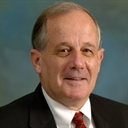 Joel Gilbert Joel Gilbert
Apogee Interactive |
|
| 12:00 – 1:30 pm | Lunch |
Closing General Session
 Co-Chair Olivia Patterson Co-Chair Olivia Patterson
Opinion Dynamics |
 Co-Chair Jenny Roehm Co-Chair Jenny Roehm
Schneider Electric |
|
1:30 – 2:30 pm | Moving from Single "Cylinders of Excellence” to an Integrated and Finely Tuned Engine
Whether we call it iDSM or iDER, the most difficult challenge to developing and delivering these programs is integration. In this session, we will discuss opportunities to overcome the silos associated with traditional energy management programs and move toward more efficient, integrated programs in order to increase cost-effectiveness, streamline program delivery, and simplify customer participation. The panel will offer perspectives that highlight best practices and lessons learned for integrated programs. Historically, utilities offered customer energy programs in silos such as energy efficiency, demand response, and solar photovoltaic. Over the last decade, there have been efforts to combine EE and DR programs. The need for Integration has grown more pressing with the anticipated proliferation of new resources like microgrids, energy storage and electric vehicles. In this lively and interactive session, we will discuss key barriers and strategies for moving beyond barriers, how utilities are integrating programs in spite of barriers and perspectives on what the future holds. Be prepared for audience participation as we will also be taking real time polls throughout the session.
|
2:30 – 2:40 pm | Welcome to Scottsdale
 Bruce Brazis Bruce Brazis
Arizona Public Service |
 Mark Gagen Mark Gagen
Salt River Project |
 Tom Hines Tom Hines
Tierra Resource Consultants |
|
2:40 – 2:45 pm | Closing Remarks
 Paul Miles Paul Miles
PECO, an Exelon Company |
|
| 2:45 – 3:15 pm | Ice Cream Social in Sponsor Lounge with Utility Load Management Exchange |
Utility Load Management Exchange Fall 2019 Meeting
The Utility Load Management Exchange (formerly the Advanced Load Control Alliance) mission is to promote load control as a viable option for utility deployments in demand reduction, economic dispatch, and/or T&D reliability through a forum for utility staff members to share information on program design, marketing, vendor management, benefit-costs and technology deployments. Learn more at www.ulme.org
| Tuesday, November 5, 2019 |
|---|
| 7:30 – 8:30 am |
ULME Pre-Meeting Breakfast at PLMA
Join us for a quick meet and greet before the conference gets underway. |
Wednesday, November 6, 2019, 3:00 – 5:00 pm and
Thursday, November 7, 2019, 8:00 am – 4:00 pm
(Open to Utility Representatives Only, Registration Required) |
|---|
|
Wednesday, November 6
|
| 3:00 – 5:00 pm |
Utility Load Management Exchange Spring 2019 Meeting
|
| 6:00 – 8:00 pm |
Utility Load Management Exchange Spring 2019 Meeting Networking Dinner
|
|
Thursday, November 7
|
| 8:00 am – 4:00 pm |
Utility Load Management Exchange Spring 2019 Meeting (includes breakfast and lunch)
|
|

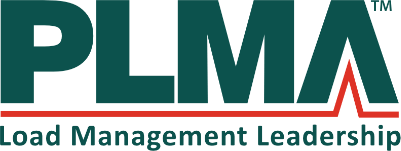

 Conference Co-Chair Melissa Knous
Conference Co-Chair Melissa Knous Conference Co-Chair Michael Ohlsen
Conference Co-Chair Michael Ohlsen Conference Co-Chair SaLisa Berrien
Conference Co-Chair SaLisa Berrien Co-Chair Mark Martinez
Co-Chair Mark Martinez Co-Chair Christine Riker
Co-Chair Christine Riker Co-Chair Isabel Sepulveda
Co-Chair Isabel Sepulveda Co-Chair Lenore Zeuthen
Co-Chair Lenore Zeuthen Co-Chair Troy Eichenberger
Co-Chair Troy Eichenberger Co-Chair Steven Koep
Co-Chair Steven Koep Carla Frisch
Carla Frisch Bob DiBella
Bob DiBella Patrick McCoy
Patrick McCoy Paul Miles
Paul Miles Co-Chair Scott Coe
Co-Chair Scott Coe Jon Hilowitz
Jon Hilowitz Co-Chair Ross Malme
Co-Chair Ross Malme Mark Bailey
Mark Bailey Tobias Weghorn
Tobias Weghorn Co-Chair Justin Chamberlain
Co-Chair Justin Chamberlain Co-Chair Poornima Eber
Co-Chair Poornima Eber Co-Chair Olivia Patterson
Co-Chair Olivia Patterson Co-Chair Tamer Rousan
Co-Chair Tamer Rousan Daniel Carr
Daniel Carr Tom Hines
Tom Hines Renee Guillory
Renee Guillory Judson Tillinghast
Judson Tillinghast Dana DeRemigis
Dana DeRemigis Carley Czyzewski
Carley Czyzewski Ralph Masiello
Ralph Masiello Eric Mallia
Eric Mallia Chris Ashley
Chris Ashley Co-Chair Andrea Simmonsen
Co-Chair Andrea Simmonsen Co-Chair Sharyn Barata
Co-Chair Sharyn Barata Co-Chair Scott Jarman
Co-Chair Scott Jarman Co-Chair Tracy Schmidt
Co-Chair Tracy Schmidt Emma Rieves
Emma Rieves Mark Goody
Mark Goody Co-Chair Rich Barone
Co-Chair Rich Barone Co-Chair John Powers
Co-Chair John Powers Co-Chair Jamie Coffel
Co-Chair Jamie Coffel Michael Brown
Michael Brown Bob Donaldson
Bob Donaldson Dave MacRae
Dave MacRae Alex Rojas
Alex Rojas Paul Tyno
Paul Tyno Margaret Taylor
Margaret Taylor Co-Chair Joseph Childs
Co-Chair Joseph Childs Sam Delay
Sam Delay Curt Puckett
Curt Puckett Carlos Lopez
Carlos Lopez Peter Steele-Mosey
Peter Steele-Mosey Co-Chair Ruth Kiselewich
Co-Chair Ruth Kiselewich Annie Ramkissoon
Annie Ramkissoon Zach Sussman
Zach Sussman Candice Tsay
Candice Tsay Leigh Winterbottom
Leigh Winterbottom Michael Goldman
Michael Goldman Josh Bode
Josh Bode Mark Sclafani
Mark Sclafani Moderator Ann Fracas
Moderator Ann Fracas Brian Pippin
Brian Pippin Leigh Holmes
Leigh Holmes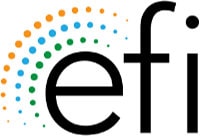 Mark Willingham
Mark Willingham Steve Kenny
Steve Kenny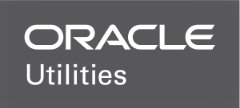 Wendy Lohkamp
Wendy Lohkamp Lowell Todd
Lowell Todd Kristen Kadetsky
Kristen Kadetsky Co-Chair Laurie Duhan
Co-Chair Laurie Duhan Co-Chair Debyani Ghosh
Co-Chair Debyani Ghosh Brenda Chew
Brenda Chew Co-Chair Meridith Nierenberg
Co-Chair Meridith Nierenberg Rachel Charow
Rachel Charow Michael Sanchick
Michael Sanchick Michael Siemann
Michael Siemann Co-Chair Kitty Wang
Co-Chair Kitty Wang Co-Chair J.T. Thompson
Co-Chair J.T. Thompson Drew Frye
Drew Frye Angie Boone
Angie Boone Andrea Carrillo
Andrea Carrillo Touseef Mohammed
Touseef Mohammed Keith Kaysing
Keith Kaysing Josh Duckwall
Josh Duckwall Andy Whitaker
Andy Whitaker Jason Lai
Jason Lai Jesse Smith
Jesse Smith Brad Rains
Brad Rains Matt Kiesow
Matt Kiesow Co-Chair Rich Hasselman
Co-Chair Rich Hasselman Forest Frizzell
Forest Frizzell Yvette Maskrey
Yvette Maskrey Co-Chair Jeff Perkins
Co-Chair Jeff Perkins Co-Chair Michael Smith
Co-Chair Michael Smith Juan Rodriguez
Juan Rodriguez Co-Chair Allison Hamilton
Co-Chair Allison Hamilton Co-Chair Richard Philip
Co-Chair Richard Philip Deepak Aswani
Deepak Aswani William J. Burke
William J. Burke Rebecca Brisson
Rebecca Brisson Jessica Atwater
Jessica Atwater Gavin Hume
Gavin Hume Rick Meeker
Rick Meeker Dave Thomson
Dave Thomson Chase Cortner
Chase Cortner Shannon Kahl
Shannon Kahl Clare Valentine
Clare Valentine Susan Gilbert
Susan Gilbert Ahmad Faruqui
Ahmad Faruqui Joel Gilbert
Joel Gilbert Co-Chair Jenny Roehm
Co-Chair Jenny Roehm Brett Feldman
Brett Feldman Paul Wassink
Paul Wassink Greg Wikler
Greg Wikler Mathew Sachs
Mathew Sachs Bruce Brazis
Bruce Brazis Mark Gagen
Mark Gagen